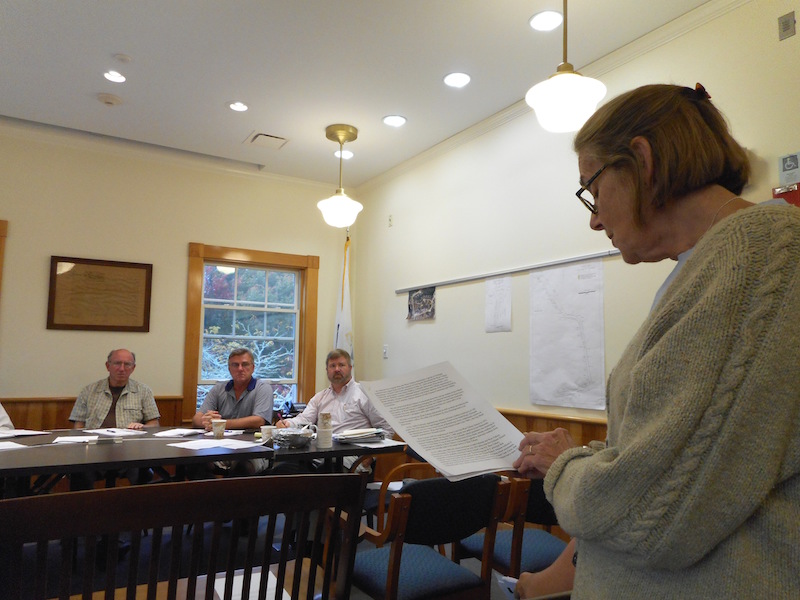In response to increased school spending over the years, Chilmark and West Tisbury are both targeting the Up-Island regional school district agreement as a means for soothing tensions over the distribution of costs.
A five-member committee in Chilmark spent the summer developing a response to the West Tisbury’s school task force, which issued a report in March shedding light on the issue of cost allocation in the district, which includes the Chilmark and West Tisbury Schools. The seven-member task force recommended revising the district agreement so that Chilmark bears more of the cost of the Chilmark School.
The complex agreement determines how the towns of Aquinnah, Chilmark and West Tisbury contribute to the cost of education. Since the 1990s when the district was formed, some saw the smaller Chilmark School as a burden to the other towns, and discussions have periodically surfaced in West Tisbury about whether to leave the district.

At a meeting of the Chilmark selectmen last week, Susan Murphy presented the final recommendation of the five-member committee, and attempted to clarify what the committee saw as inaccuracies in the West Tisbury report.
Among other things, the committee said the Chilmark School was not built during a time of falling enrollment, as stated in the task force report, but as a result of dwindling space. Reading from a three-page letter to the selectmen, Mrs. Murphy said the Chilmark School was always intended as a smaller, more intimate alternative for up-Island families, and that the new building incorporated town resources such as the community center and library in the center of town.
The up-Island district formed in 1995 as a result of growing enrollment and state incentives. It also helped distribute the cost of an addition to the West Tisbury School. But enrollment declined around the turn of the millennium, and state transportation reimbursements fell to about 50 per cent. The report states that it would have been “possible, if not feasible” at the time to close the Chilmark School and focus all programs in West Tisbury.
The Chilmark committee argues that school enrollment in West Tisbury may be less stable than suggested in the task force report, since most of the growth has been in the upper grades, and the New England Association of Schools and Colleges projects no sizable growth in birth rates over the next three to five years. The committee points to a 34 per cent decline in enrollment since 1995, along with expanded programming and increases in the budget for shared services as the likely causes of increased operational costs in West Tisbury.
The task force found, among other things, that Chilmark School costs the district between around $657,000 and $1,490,000 per year in duplicated services, although most of the cost is borne by Chilmark. A two-year comparison of the schools showed that a higher percentage share of students in West Tisbury caused the town’s assessment to increase by about 17 per cent, compared to 10 per cent in Chilmark.
The West Tisbury School had 318 students in 2015, compared to 49 in Chilmark. That included 47 school choice students in West Tisbury and seven in Chilmark. The West Tisbury School has a capacity of 400 students.
Mrs. Murphy said calls for the closure of the Chilmark School are a “persistent theme” in West Tisbury. “This has created a hostile environment for the Chilmark School administrators and staff alike, who have been put in the position of having to defend and justify their very existence,” the letter states.
The task force does not recommend closing the Chilmark School, and did not consider that an option in the course of its study, although the report points out that it would be within the district committee’s power to do so. The task force also suggests that West Tisbury’s exit from the district should be a last resort.
The selectmen and committee members reaffirmed their devotion to staying in the district. “We are not just numbers on a piece of paper,” Mrs. Murphy said.
Selectman Jim Malkin, who served on the Chilmark committee, said there were different ways to look at the same data, and he questioned whether West Tisbury’s methods were correct. But he noted a common goal of providing quality education to the district. “That’s what was driving the discussion,” he said.
The committee recommends that the selectmen and town accountants in all three towns work together to reexamine the formula in the district agreement. The selectmen accepted the recommendation and plan to appoint another committee in the coming weeks to address the issue.




Comments (4)
Comments
Comment policy »